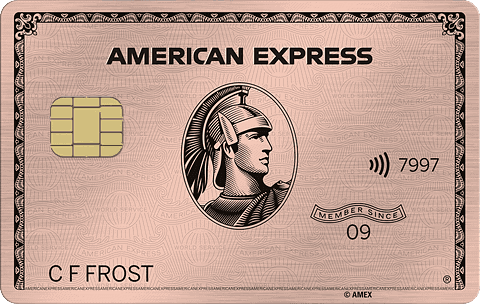

Also See this Newer Article: Rose Gold / Amex Gold Review
I have the American Express Gold Card charge card. My girlfriend does, too. While the card carries a $250 annual fee, it offers a $10 monthly GrubHub/Seamless online ordering credit (which I usually use the first week of each month – NYC living!) and a $100 annual airline credit (which I use to get two $50 Delta gift cards), bringing the net annual fee to $30.
For that $30, I earn 4x Membership Rewards points on dining and groceries and 3x on airfare.
On Monday, Travel With Grant reported that one of the card’s major flaws – a restriction on the 4x on dining being limited to US restaurants only – is being lifted as of tomorrow, June 6. This is great news, as one of the card’s big drawbacks if you travel internationally a lot was that you really needed another card for international dining spend.
And yesterday, Doctor of Credit reported that the Rose Gold color card (which was available only until January of this year after the Amex Gold‘s splashy relaunch last year). For sure, many people that wanted the Rose Gold colored card weren’t aware it existed. Now you can get the Rose Gold version of the card again.
In this article
Is the Amex Gold card Your Best Credit Card?
That depends on a number of factors. The biggest one is what else is in your wallet.
The Citi Prestige bests the Amex Gold for dining, offering 5x Citi ThankYou points to the Amex Gold’s 4x. However, if you don’t already have and get value out of the Prestige, the $495 annual fee could be a showstopper. If you spend a LOT on dining it may be worth it, but for most, that extra point per dollar may not move the needle.
Many of you already have the Chase Sapphire Reserve which offers 3x Chase Ultimate Rewards points on dining. So again, the question becomes – is it worth it to pick up an extra card. If you already have the Chase Sapphire Reserve, maybe and maybe not.
Another consideration is building up balances across transferable point currencies. If you have 500k Chase Ultimate Rewards points and zero Amex Membership Rewards, this card can definitely jumpstart your earnings on Amex.
When it comes to groceries, the Amex Gold Card is the best around for earning points. But if you don’t mind straight cash, the Blue Cash Preferred Card would be a better choice, earning 6% cash back up to $6,000 per year. And the Amex Gold limit is $25,000 a year, so heavy grocery spenders would want to take that in to account.
Which Credit Cards Do I Use for Dining and Groceries?
Me? I keep and use the Amex Gold Card for my grocery spend. I do net back more than the $30 net effective annual fee and build up my Membership Rewards balance. I use my Citi Prestige for dining and I use my Chase Sapphire Reserve for airfare because it offers, in my opinion, the very best (and included complimentary) trip delay insurance.

What are your thoughts? What do you use for dining and grocery spend?
Let me know here, on Twitter, or in the private MilesTalk Facebook group.
New to all of this? My “introduction to miles and points” book, MilesTalk: Live Your Wildest Travel Dreams Using Miles and Points is available on Amazon and at major booksellers.














![Amazon “Pay One Point” Deal Links (Compilation) [UPDATED] amazon pay one point pay 1 point links amex chase citi discover](https://milestalk.com/wp-content/uploads/2023/11/payonepoint-218x150.png)
![Chase Ultimate Rewards Points [Complete Guide] chase ultimate rewards guide](https://milestalk.com/wp-content/uploads/2020/01/chase-ultimate-rewards-guide-218x150.jpg)



Hi Dave, thanks for linking to my AMEX Gold Card post 🙂
It was a great scoop, Grant 🙂 And a great enhancement for the Gold Card!